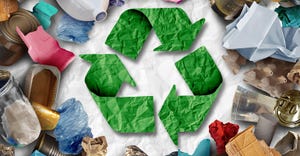Wind Turbine Blades Destined for Landfill in Wyoming
While the effects of burying the blades may not be felt immediately, there could be a larger impact on the state both environmentally and economically.
Roughly 1,000 wind turbine blades from three wind farms in Wyoming are destined for the Casper Regional Landfill because they are made from fiberglass and have been deemed non-recyclable.
Rawlins Times reports that while the burial of the blades may not affect Carbon County immediately, it could have a larger impact on the state both environmentally and economically. Additionally, there is a significant amount of wind turbines in the county with more being created for future projects.
The Wyoming Department of Environmental Quality provides permits to landfills in the state, but each landfill determines what materials it will accept as long as it meets the requirements within the permit. According to the report, a spokeswoman for the Wyoming Department of Environmental Quality said the blades do fit that criteria.
Rawlins Times has more:
Hundreds of wind turbine blades from three Wyoming wind farms (one in Glenrock, Wyo. and two in Saratoga, Wyo.) will be disposed of in Casper until next spring.
Nearly 1,000 blades from those three wind farms have to be buried in the Casper Regional Landfill due to the fact that they are un-recyclable as they are made of fiberglass. Newer turbine blades aren’t made from that type of material and can be recycled, but the blades being shipped to Casper are nearly two decades old. When they were first created, the engineers didn’t have the foresight to make them recyclable materials.
“I think it’s one of those things no one thought about too much back then when the blades were first made,” Carbon County Planning and Development Director Sid Fox said. “Back then, there just wasn’t a lot of review in terms of permitting and people didn’t ask hard questions. I personally think the energy industry needs to find ways to recycle or reuse these blades.”
About the Author
You May Also Like


